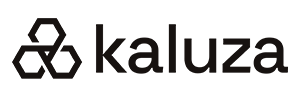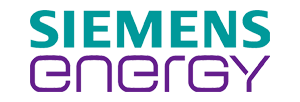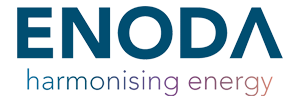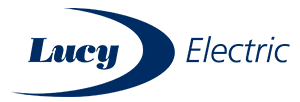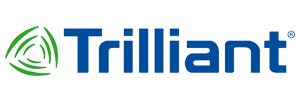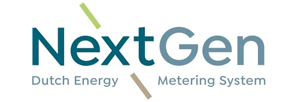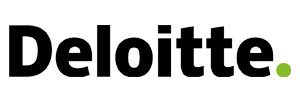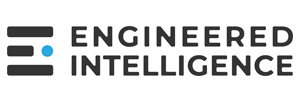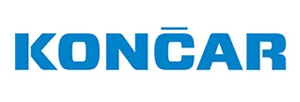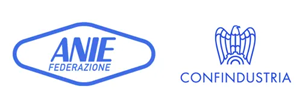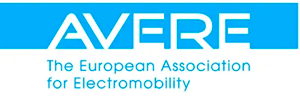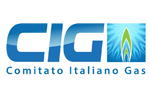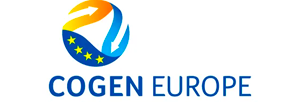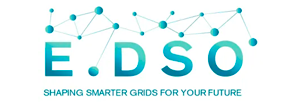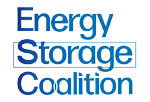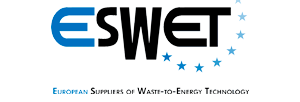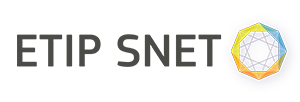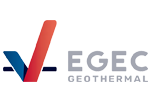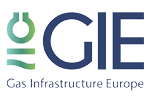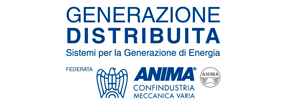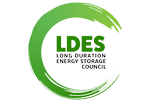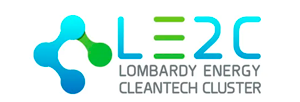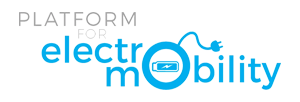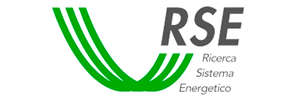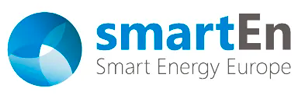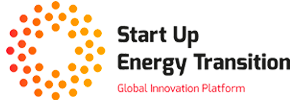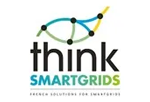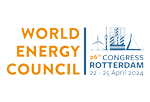The Digital Utility of Tomorrow
)
- Event: Enlit Europe 2024
- Date: 24th October 2024
- Estimated Read Time: 7–8 minutes
Watch the video or read the article below:
Introduction: Charting the Course for the Utility of the Future
The global energy transition is accelerating—bringing with it tremendous challenges and transformative opportunities for utilities worldwide. That moment of inflection formed the backdrop for a high-powered, cross-sector panel discussion titled "The Digital Utility of Tomorrow," moderated by Gaia Gallotti of IDC at Enlit Europe 2024.
Acknowledging the dramatic decarbonisation achievements of the past decade—a 32% decline in emissions intensity and a 4X increase in heat pump sales across Europe—Gallotti opened the panel by asserting that utilities are firmly in the “driver’s seat” of the energy transition. However, the panel made clear: the road ahead demands a radically digital, flexible, and collaborative approach.
Showcasing a show-and-tell format with six innovation leaders from ENEL, Siemens, Eaton, IFS, Landis+Gyr, and Kamstrup, the conversation unpacked practical, real-world utility use cases spanning grid modernisation, hydrogen blending, predictive analytics, edge computing, digital twin technology, and advanced leak detection across both energy and water systems.
This blog covers the event’s top insights, breakthrough technologies, and vital narratives shaping tomorrow’s utility enterprise.
Section 1: Facing Today's Turbulent Landscape – Climate, Complexity & Capability Gaps
Kicking off the dialogue, Nicola Rossi of Enel set the scene by articulating the multilevel transformation enveloping energy systems:
- Electrification of consumption and decarbonisation of generation
- Climate change’s increasing frequency of extreme events
- Global supply chain disruptions and regulatory shifts
- Rapid technological evolution, notably in digital and clean tech
"Events that used to happen every ten years are now happening multiple times per year," said Rossi. “Resilience and agility are mission-critical.”
Rossi emphasised three primary areas where Enel is innovating to improve systemic flexibility:
1. Grid Infrastructure: Combining lithium-ion with emerging storage technologies and integrating digital tools into substation infrastructure.
2. Industrial Electrification: Pilots like thermal energy storage using sand to supply decarbonised heat for industrial customers in the food sector.
3. Smarter Assets: Upgrading mature energy assets (hydro, geothermal) for dynamic operability in response to fluctuating demand and variable renewables.
Section 2: Gas Utilities Respond – Decarbonisation Without Displacement
IFS VP Carol Johnston spotlighted two gas-centric utility innovations—challenging the notion that natural gas is incompatible with a greener grid.
FortisBC’s 30-by-30 Program:
Targeting 30% emissions reduction by 2030, BC’s gas utility is blending renewable natural gas (RNG) into pipelines by sourcing biogas from agriculture, landfills, and wastewater—currently comprising 1% of total volume. Customers can choose to increase their RNG contribution—up to 100%.
SoCalGas:
The largest gas utility in North America is piloting green hydrogen produced via solar-powered electrolysis. Their “Hydrogen Home of the Future” leverages existing infrastructure to deliver hydrogen blends (currently 2–3%) via traditional gas pipelines—demonstrating proof of concept without needing wholesale system overhauls.
“Hydrogen lets them decarbonise without dismantling,” Johnston asserted. “It’s a compelling path forward that works in harmony with renewable natural gas development.”
Section 3: Grid Visibility and Edge Intelligence – Modernising Core Infrastructure
From the distribution edge to the secondary substation, panelists shared how digitalisation is reimagining grid operations and shaping the smart grid of the future.
Landis+Gyr’s Ilir Stefani introduced their comprehensive “edge-to-enterprise” platform. It links smart meters, EV infrastructure, and building-level DERs to cloud-based grid analytics and demand response systems in real time.
“The challenge isn’t just technical—it’s conceptual,” Stefani highlighted. “We need a new way of managing the network that’s scalable, secure, and truly data-driven.”
Two critical Swiss case studies illustrated this in action:
- Using smart meters for near real-time power quality monitoring and fault detection.
- Leveraging AMI infrastructure to control behind-the-meter devices (heat pumps, solar inverters) and mitigate peak loads in an evolving smart grid context.
Siemens’ Fabio Bricchi underscored how intelligent equipment like SF₆-free GIS with embedded IoT sensors now supports:
- Preventive/predictive maintenance
- Circular economy goals (85% of switchgear materials recyclable)
- Full regulatory compliance with upcoming EU bans
Also highlighted: Siemens’ use of digital twin technology to virtually model substations and avoid costly service interruptions during retrofits, dramatically improving planning and operational continuity.
Section 4: Hardware Bottlenecks Meet Software Velocity
Philippe Beauchamp from Eaton tackled head-on the global strains on T&D infrastructure caused by unprecedented electrification and DER demand. “There simply isn’t enough land, steel, or labour to build our way out,” he said.
Enter digitalisation-driven solutions:
- Distributed intelligence at the secondary substation edge enhances visibility where none existed before—using data as the primary resource.
- Eaton’s agile “market-driven innovation unit” works directly with utilities to co-develop end-use applications, using edge-compute platforms capable of conducting voltage optimisation, FLISR, and DER integration.
“Optimisation of existing grid assets is no longer optional—it’s the only way we keep pace,” Beauchamp cautioned.
Section 5: Water as a Utility Frontier – Smart Metering for Resource Preservation
Water innovation received centre-stage as Kamstrup’s Henrik Andersen presented a compelling use case from Oneida, Tennessee—a small city where water losses reached a staggering 51%.
Solution: Kamstrup deployed 4,500 smart meters embedded with acoustic leak sensors that detect noise patterns of water escaping pipes. Paired with AI-based anomaly detection, this tech:
- Identifies leaks with accuracy
- Filters out non-critical noise
- Reduced non-revenue water by 25% in just 3 months
“If we can’t deliver what we produce, it’s wasted energy,” Andersen argued. “Water loss = carbon loss.”
He called for stronger EU-wide regulation similar to Denmark’s 10% water loss limit, emphasising conservation as a decarbonisation strategy.
Section 6: Use Cases for the Next 24 Months – From Hydrogen to Digital Twins
The session’s second half shifted focus to near-term digital deployments. Highlights included:
- Enel’s edge computing rollout at secondary substations enhancing metering and grid control within a smarter, more flexible infrastructure.
- Eaton’s storm resilience program in Florida, utilising sensors and real-time communications to respond to hurricane damage
- Siemens’ use of digital twin technology for seamless substation upgrades, circumventing shutdowns and optimising future network extensions
- Exelon’s asset lifecycle strategy integrating AI, project planning tools, and predictive forecasting via IFS and partners like Microsoft
“AI is only as valuable as the business problem it solves,” Nicola Rossi reminded the room.
Section 7: Regulation, AI, and Data Governance
In response to an audience question on policy, panelists noted the importance of regulation evolving alongside innovation:
- Carol Johnston praised Europe’s leadership on AI oversight compared to North America
- Henrik Andersen advocated for “data precision” to prevent false positives in decision-making (e.g., swimming pool refills mistaken for bursts)
- Nicola Rossi emphasised Enel’s internal AI ethics board to oversee data use, privacy, and biases
“Legislation must be dynamic. Stagnant rules cripple likely breakthroughs.”
Section 8: Accelerating the Pace of Innovation
With innovation cycles accelerating, companies shared how they’re adapting:
Eaton:
Created a fast-track innovation startup team using agile workflows for co-development, cross-functional R&D, and outcome-based solution delivery (e.g., running software in a Cisco edge box).
Siemens:
Launched their Xcelerator platform to crowdsource, scale and share solutions across an open consortium of partners and customers globally—with a firm emphasis on sustainability.
Enel:
Evaluates 2,000 external solutions annually. About 100–200 become pilots, with ~10% achieving full scale. Ventures are pursued via “venture client” model—not tech investment—with a focus on co-creating outcome solutions, not owning IP.
Section 9: Human + Machine Collaboration – Addressing Talent Gaps Digitally
As utilities face shortages in engineering and data expertise, the panel explored the growing imperative of human-machine balance.
Landis+Gyr:
Addressing disjointed talent pools by offering analytics and grid operation tools as-a-service.
Kamstrup:
Investing in automation and AI to reduce workforce burden, increase transparency, and improve leak response.
IFS:
Providing digital tools that support remote worker assistance and field staff upskilling—including integrating Microsoft Copilot-style AI-native interfaces to answer real-time questions.
“Work smarter—not just longer,” echoed Johnston. “Especially when the workforce is aging, and replacements are hard to find.”
Conclusion: Building the Utility of Tomorrow
The session concluded with a unified vision: the digital utility of tomorrow must be flexible, data-driven, collaborative, and resilient—not just to supply-side shocks, but to socioeconomic shifts and climate volatility.
Five core takeaways emerged:
1. Data remains the foundation—accuracy, insight extraction, and real-time use are key.
2. Flexibility is the new gold—DERs, consumer devices, hydrogen, and storage must align around responsiveness.
3. Interconnection delays and grid bottlenecks won’t be solved by copper and concrete alone. Virtualisation, forecasting, and smart grid technologies hold the key.
4. Co-creation is no longer optional—utilities, vendors, and policymakers must align on goals and executions.
5. AI is both a carrot and a caution—applications must be ethical, transparent, and human-centric to truly add value.
As Gaia Gallotti closed the panel, she emphasised what underpins it all: “This isn’t an industry for the 20th century anymore—it’s a collaborative, decarbonising, and digitised network of partners driving toward 2030 and beyond.”
Indeed, the future of the utility isn’t just about power—it’s about empowering systems, people, and solutions to work together with shared intelligence and purpose. Enlit Europe 2024 made that vision clearer than ever.
JOIN US IN 2025: BOOK YOUR PASS










